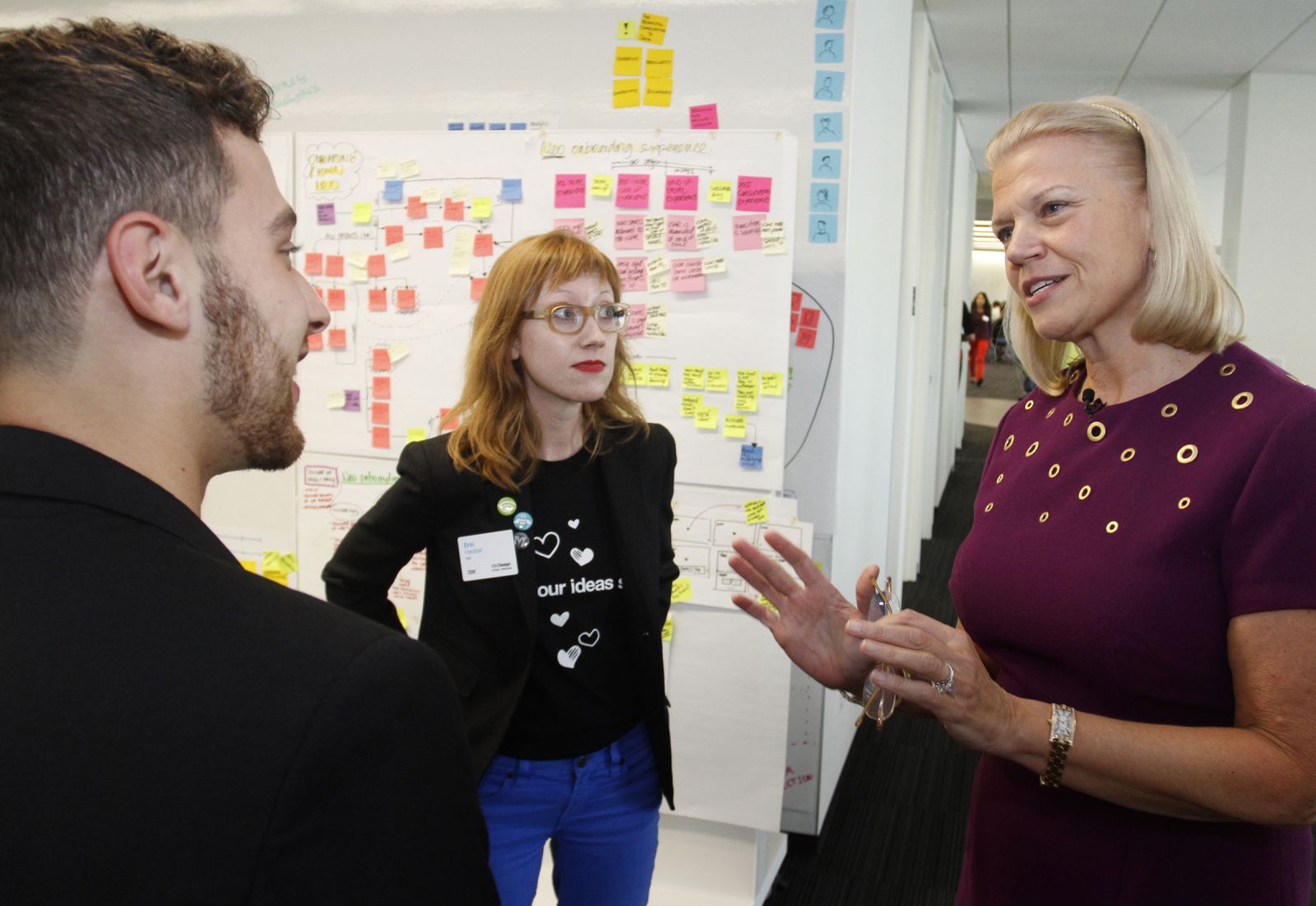IBM recently unveiled a new, a state-of-the-art product design studio in Austin. With it, the tech behemoth is ushering in a new era of what it calls “Design Thinking.” The concept centers around a collaborative environment for software designers, software developers and product managers with the intention to help transform how IBM Big Data, cloud, mobile, social software and cognitive solutions are designed.
“This studio is the embodiment of a new approach to software design,” said Phil Gilbert, general manager, IBM Design. “Our goal, on a scale unmatched in the industry, is to modernize enterprise software for today’s user who demands great design everywhere—at home and at work.”
Can the workplace environment influence such a lofty goal? This type of fun, collaborative space isn’t new to tech startups. It’s certainly not new to Austin. But it’s relatively new to IBM and other longstanding giants. The question is: Can it truly make a difference in employee satisfaction and productivity? We dug up fascinating research on popular office design trends to help answer that question.
On display. Forget the glass ceiling…what’s with all the glass walls? In a worldwide survey by Ethisphere and Hones Lang LaSalle on the Influence of Workplace Design & Practices on the Ethical Environment, a whopping 81 percent of respondents believed that open office plans, which cause staff to be more visible to one another, generally promote improved behaviors when compared to individual office plans. More than 20 percent actually experienced this first hand by changing to an open office plan and observing the results.
Color me happy. Gone are the days of the grey workplace. Highly cited research by Kalyan N. Meola, with the University of Hawaii at Hilo, states walls that are blue and/or green can help employees feel calm, relaxed and hopeful; yellow and orange can stimulate and energize employees. Notice in the image above how IBM boldly uses a bit of both worlds in its meeting spaces. Perhaps eliciting hopeful excitement? Each meeting room at the IBM Design Studio features iconic images, including the rebus (pictured above), designed in 1981 by Paul Rand.
 Sticky situations. Ever wonder, “What’s the deal with all the sticky notes?” Sticky notes are so beloved in collaborative software development environments that there is entire business process modeling systems built around them. In fact, “sticking” sticky notes in certain ways mean different things. For instance, rotating a sticky note onto its side to form the shape of a diamond often means a yes-or-no decision that must be addressed.
Sticky situations. Ever wonder, “What’s the deal with all the sticky notes?” Sticky notes are so beloved in collaborative software development environments that there is entire business process modeling systems built around them. In fact, “sticking” sticky notes in certain ways mean different things. For instance, rotating a sticky note onto its side to form the shape of a diamond often means a yes-or-no decision that must be addressed.
Stand up or sit down? Standing desks make workers 10 percent more productive, concludes an experiment conducted by ReadWrite the Draugiem Group. But what’s really scaring employees straight [out of their chairs] is this: A 2010 study by the American Cancer Society found that women who sat more than six hours a day were 37 percent more likely to die prematurely than women who sat for less than three hours. The early-death rate for men was 18 percent higher.
A runaway hit. While not logically part of collaborative movement, it stands to note that treadmill desks keep the momentum going: They’ve been found to improve employee health without affecting work performance, according to a study published in the journal Obesity. Although it can take some getting used to working on the run, as The Atlantic’s James Hamblin points out.
Has your office made a move toward a more modern, collaborative environment? If so, have you seen a difference in employee satisfaction and productivity? We’d love to hear your story. Until then, the jury will be out on whether IBM’s new design studio becomes an idea generator destined for the record books. We’ll keep you posted.
Image credits:
Meeting room image courtesy of IBM
IBM Chairman and CEO Ginni Rometty, right, talks with designers David Schwartz, left, and Erin Hauber. Jack Plunkett/Feature Photo Service for IBM



